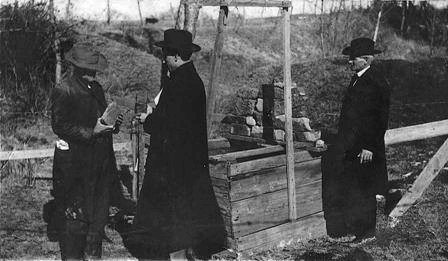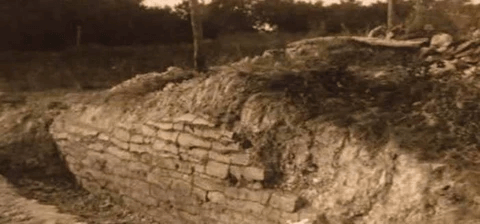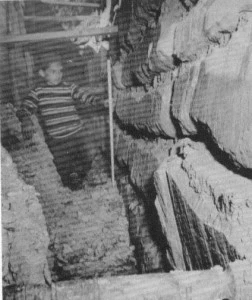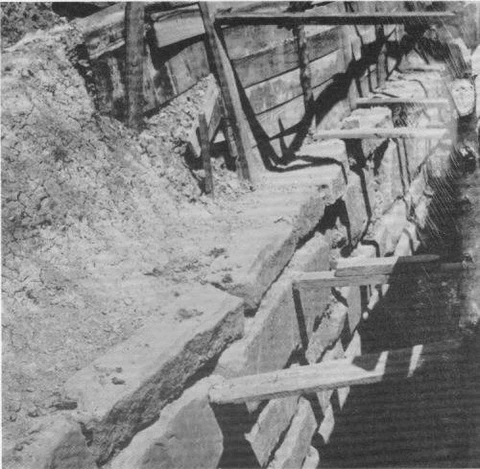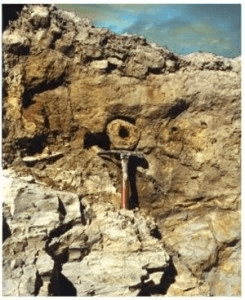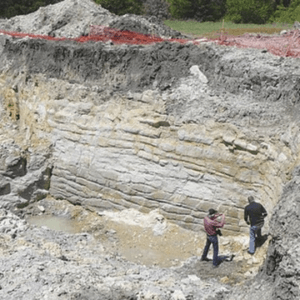
Texas: A Thousand Years Old Wall of the Unknown Civilization of the Giants of Rockwall
 05. 08. 2019
05. 08. 2019

We are located in Texas near the town of Rockwall. The name of the city is a reference to another ancient city, whose peripheral masonry was accidentally discovered while trying to dig a well. The wall encloses an area larger than 30 km2. Most of the current inhabitants of the city about existence wall of giants they have no idea, and so they don't even know how their city's name came from.
Farmers community
Among the new arrivals were three men TU Wade, BF Boydston and Mr. Stevenson, who decided to set up a farming community in these regions. According to historical records, TU Wade and his family began building the foundations of their new house in 1852. They were on the eastern side of the valley, through which the Trinity River flows near today's western edge of the town of Rockwall. During the digging of the well, Wade encountered arranged stones. Another digging revealed stone wall (en. orig. rock wall)which was below ground level and was very long. Before digging the whole wall, they tried to dig a well through it. But the stones were damp and very heavy. After about 9 meters, they gave up, because pulling massive boulders was very difficult or even impossible. So they decided to dig a piece next door. At about a depth of 10 meters, they found an almost perfect square alcove that looked like a meter-by-meter window. They dug the shaft to 12 meters, but found the masonry foundations.
At that time, Stevenson, Boydston, and Wade had a dispute. Everyone wanted the new settlement to be named after him. When they discovered stone wall orig. rock wall), they named the emerging city of Rockwall. This information was provided by Mary Pattie Wade Gibson, the granddaughter of TU Wade. Mary is the founder of the local museum associated with the history of Rockwall. According to the surviving records, she testified that her ancestors had carried out further excavations, indicating that there was the peripheral masonry of the rooms, including the passages. There was also a corridor (street?), Which went further uphill.
Mary told of a case of two unknown men who were obsessed with finding gold. Obviously inspired by legends from the Indians, they tried to find a stash that would fill it. As a result, it was possible to uncover another peripheral masonry of buildings and probably another part of the historic street. They found the mouth of a hallway with a vaulted Gothic-style ceiling - no less similar to that of the Mayans. The men began to fear that the ceiling would collapse and therefore gave up digging and finding gold in the corridor.
The deeper they dug, the wall widened
Mary Pattie Gibson also testified that her grandfather had discovered that the deeper they were digging, the more the wall widened. This would indicate that it was a very massive wall / structure that carried much weight. It could be the walls or the pylon of the bridge.
Further information provided by Mr. Deweese (one of the founders of the town). Her father described that they had uncovered a doorway with shaped stones. This part has even been open to the public since 1936. At the end of 40. years, however, again covered in alleged fear that it could collapse.
In 1949, Mr. Sanders of Fort Worth, Texas, was doing additional excavations on the wall. He discovered four huge stones whose average weight was estimated to be 2,5 tons. Signs in the form of pictograms were found on these stones. The stones are made of very hard material and were located deep in the ground, so that the patterns could not occur accidentally. It should be noted that by the year 1950 no other inscriptions of this kind could be discovered.
There are other reports of discovery of door or window niches that have been dug up over the last century. For example, 05.11.1967 reported one such case Daily Morning News. The author of the article then stated: “As stated by TH Meredith, at the beginning of 20. let 2o. century, as they dug a well along the wall, they managed to expose an arched stone beam above a door or window. ” On the site were discovered metal rings in the soot in the stone. Their chemical analysis revealed that they were composed of tin, titanium and iron.
Discovery of a humanoid skull
It is also said that during the excavations a humanoid skull of unprecedented size was discovered - a giant skull. Who has it and where it got lost is not much talked about.
Scientists who were interested in and visited this site personally tried to determine the time of construction: “It's very exciting to see this strange building with your own eyes and think about its history. Who built it? What purpose did it serve? Who were its architects? We have many questions without much answers. There is room for further research.
The effort to explain the wall's formation in a geological way seems odd. Yet there are those who don't see anything artificial. So we have a unique opportunity to take a close look at the matter and perhaps even find other solutions… ”
It seems to have been able to uncover parts of the urban development of an unknown civilization that, like the Mayans / Incas / Egyptians, had been able to handle very heavy stones with great precision in ancient times. It also suggests that the building could be linked to legends about giants who, according to some stories, have inhabited our Earth relatively recently - just 500 years ago. Their skeletal remains have been found in many places. But that's another story - a topic for a separate article.





 6
6